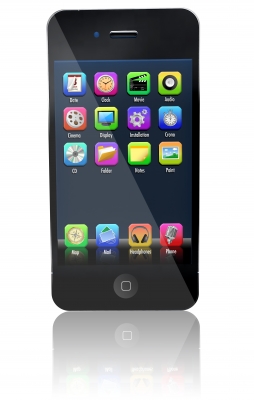Mobile devices are becoming ubiquitous in the healthcare industry – from quickly filing e-prescriptions to collecting and sending patient health information (PHI) directly to an EHR/EMR (electronic health or medical record) system, the use of smartphones, tablets and other portable devices is changing the quality of patient care for the better across the nation.
Mobile devices are becoming ubiquitous in the healthcare industry – from quickly filing e-prescriptions to collecting and sending patient health information (PHI) directly to an EHR/EMR (electronic health or medical record) system, the use of smartphones, tablets and other portable devices is changing the quality of patient care for the better across the nation.
But when it comes to securing your mobile devices and meeting strict HIPAA compliance standards, physicians and other healthcare professionals may not realize the security precautions they need to take to prevent a data breach and HIPAA violation.
One example of recommended best practices can be found in Yale University’s HIPAA guide for mobile device security (intended for its covered components, such as the Schools of Medicine, Health Services, etc.) including:

Smartphone Security
- Passwords – Yale recommends users have a password with a minimum of four characters. They also recommend implementing a lock-out setting after 10 failed attempts to enter a password.
- Encryption – Data must be encrypted at rest and in transit, including backup data.
- Message Storage – The storage limit is capped at 200 messages at one time or 14 days of messages.
- Applications – All applications that create, store, access, send or receive PHI must meet HIPAA security standards. Yale also has a Security Design Review service that can check out any custom developed apps for compliance (although the website really needs to update its language regarding Application Service Providers and the required SAS 70 Type II documentation – SSAE 16/SOC 1 have since replaced the SAS 70 standard).
- Software – Apply security updates frequently and use the most recent OS available.
- Remote management and Tracking – Mobile devices must have a remote deletion and tracking feature or you have to sign up for a service that can wipe it if it is stolen or lost. For the iPhone, that can mean installing the Find My iPhone app. Yale provides a comprehensive guide to locating and wiping iPhones, Blackberrys (read this, grammar nerds) and other smartphone devices.
- No Circumvention – This refers to protecting the security of mobile devices by prohibiting users from using unauthorized software and hardware, etc.
- Wireless – Yale requires the use of VPN services when using digital cellular to connect to the Yale network and if not using one of Yale’s cell carriers. For Bluetooth™, passwords or PINs are required to secure connections.
- Thumb drives and Other Portable Media Devices – Storing PHI is prohibited unless the devices meet the Yale encryption standards.
- File-sharing – Users that need to send or exchange PHI outside of the network have to use a secure file transfer tool, or secure file transfer protocol (SFTP).
- Servers – Naturally Yale recommends using their IT department-owned servers to store all PHI. Their requirements are aligned with the HIPAA breach notification rules that require reports of data breaches if it affects 500 or more patients.
- Privacy Filters – Computer screens that display PHI must have privacy filters installed if they’re viewable by the public.
- Device Disposal – When upgrading or getting rid of your mobile devices, you must first securely destroy or delete PHI.
- Email – Configuring email accounts to auto-forward to a non-Yale email account is prohibited if the email account may have PHI in its inbox.
This is a great start when it comes to documenting and specifying the security measures your organization needs to take, but don’t just copy and paste these policies. Every company has different needs that require a customized plan to keep PHI safe.
Also, not every device is created equal. Last year, BGR.com found a major security flaw in the security lock design of AT&T’s Samsung Galaxy S II cellphone that left it open to a simple workaround, allowing users to bypass the PIN or unlock feature. If you tap the lock button to wake it, wait for it to time out and go black, then tap the lock button again, the phone is suddenly accessible and the PIN rendered useless.
Make sure you know your device and its features, and deploy similar security measures as found above to stay compliant even on the go.
For more on IT security and best practices, read HIPAA Compliant IT Security and Best Practices. Or for more about smartphone security, read Mobile Security: How Safe is Your Data?
References:
Yale University’s HIPAA Security Updates and Reminders
Major Security Flaw Lets Anyone Bypass AT&T Samsun Galaxy S II Security







